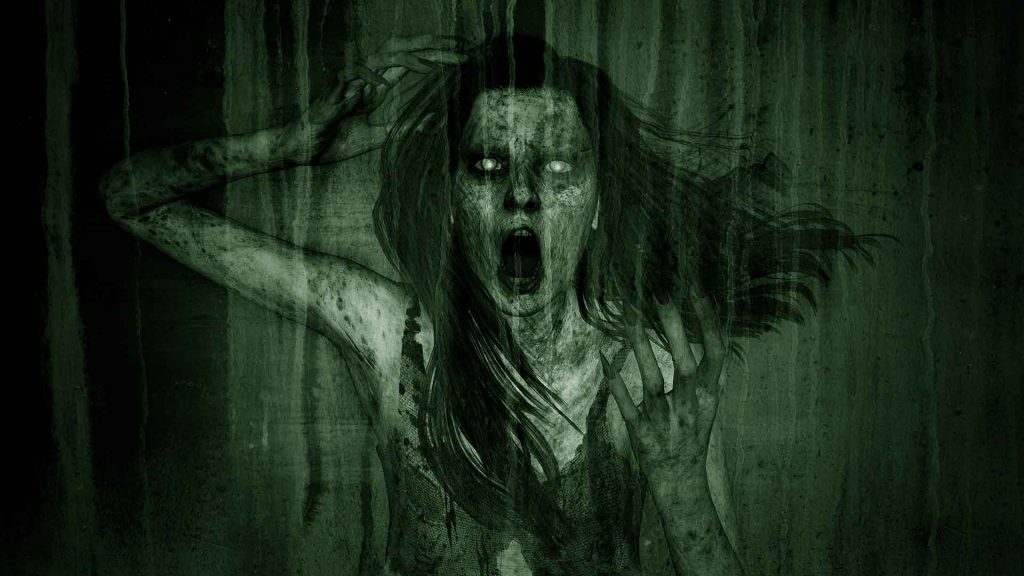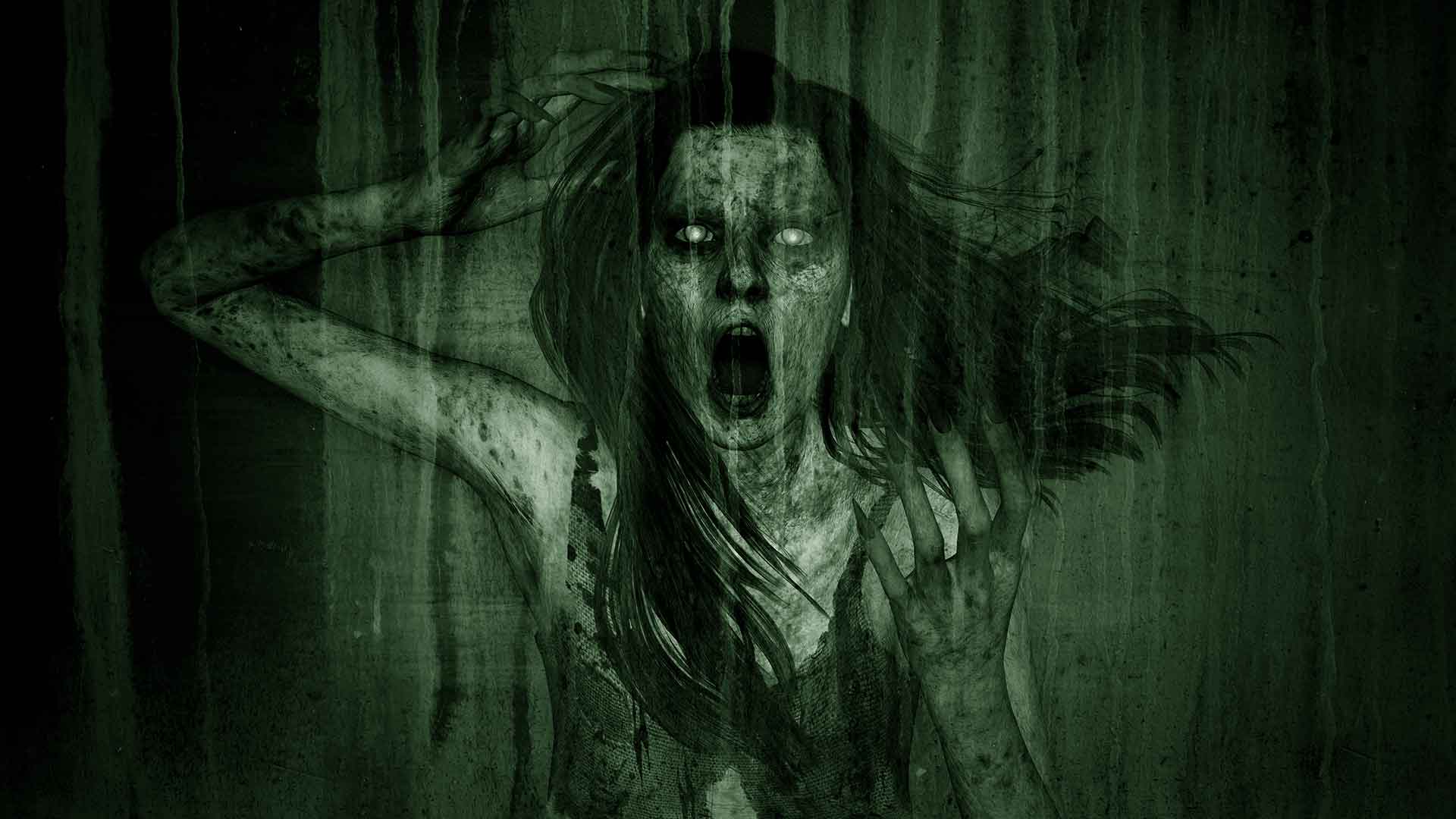EDDIE BRAZIL looks into four accounts of real-life scariest ghosts, which could have come straight from a Hollywood horror film.
There is a difference between ghost stories and horror stories, isn’t there?
Horror stories invoke feelings of dread, revulsion or disgust, and fairly thrust your face into the coffin.
Whereas ghost tales are mostly about suspense, atmosphere, chills and controllable fear. In some cases, enjoyable fear.
Of course, what I am referring to here are fictional ghost and horror stories. But can we apply the same definitions to real life accounts of the paranormal and horror?
Real life horrors confront us every day on our TV screens or in the press. Whereas real ghosts would appear to be more elusive, choosing to make their seemingly benign presence felt, whenever it suits them, and completely unaware of the recipient.
But is that always the case? Can real life ghosts be horrific and terrifying?
Here are some of Britain’s scariest ghosts!

The Northfleet Horror
In 1962, in the town of Northfleet, some 20 miles south east of London, an ordinary three-bedroomed, terraced house was the scene of a terrifying case of haunting.
Twenty-eight-yea- old Sidney Maxted and his wife, together with their children, Kevin, 6, Linda, 4, and baby Clai, moved into 16 Waterdales. Prior to the family taking up residence, the house had no history of paranormal activity.
During their tenancy, Mrs Maxted gradually became concerned about the noises she heard during the daytime which came from the bedroom which was above the living room. The sounds seemed to be footsteps pacing across the floor.
Sometime later, events took on a particularly sinister nature when the Maxted children began to complain of the scratching noises, which came from under their beds, and that their bed-covers being yanked away, and of themselves being mysteriously pulled or struck by invisible hands.
Soon matters came to a head. One night about 2am, Mrs Maxted went to attend to baby Clair. On returning to bed, she looked across to the door and was surprised to see a figure in the form of a young child enter the room. Mrs Maxted, thinking it was her six-year-old daughter, responded automatically, and exclaimed “Linda?”.
The form moved across the room and advanced towards her. As it approached, it grew in height, until it had become a tall figure which bent menacingly over the bed. Mrs Maxted’s terrified screams woke her husband, and the apparition vanished. The harrowing experience proved too much for the family, and the next day they left the house.
The Floating Head
The Theatre Royal in Margate is one of Britain’s oldest stages. It was built in 1786, and over the centuries, has seen many illustrious thespians tread its boards.
However, it has also gained another reputation. It is said to be one of the most haunted theatres in the country.
Many of Britain’s theatres can boast a resident ghost. Most seem to be of a benevolent kind, and stick to vaguely appearing in the stalls or walking through walls – phenomena which would appear to be non threatening. However, not all theatre ghosts are so benign.
In January 1966, Alfred Tanner was contracted to decorate the auditorium of the Royal. To minimise any inconvenience to the running of the theatre the work was to be carried out at night.
During Tanner’s first night he reported hearing the soft whisperings of voices throughout the auditorium. He explored the building but could find no reason for the sounds.
On the second night, he again heard the soft whisperings throughout the stalls. At one point, he was made to jump with alarm when the booking office door slammed hard shut. Mr Tanner was by now becoming a little concerned.
He tried to take his mind off the strange sounds by concentrating on the work to be done.
Yet,as he stood on the stage, he heard footsteps walk across and stop behind him.
Indeed, he had the most unpleasant feeling that there was someone standing at his rear. He turned around quickly, but the stage was deserted.
Tanner was contemplating if he should abandon the job, leave and go home. The atmosphere in the theatre had become unsettling and full of dread. Two more incidents prompted him to do so.
As he continued working he heard a backstage door slam heavily.
He spun round and was terrified to see a disembodied head appear from behind the curtains on the left of the stage.
It came floating towards him and Tanner was horrified to see that it was the shoulders and head of a woman with frizzy hair, slits for eyes and a receding chin.It moved past him and disappeared into the curtains at the other side of the stage.
At this Tanner had had enough, and fled from the theatre.
The Crawling Woman
Ardachie Lodge stood on the shores of Loch Ness in the Scottish Highlands.
In December 1952, Peter McEwan and his wife Dorothy moved in with plans to turn the land to farming.
Some months later, they advertised for a housekeeper and farmhand to help out with the now expanding farm.The ad was answered by a couple called MacDonald who were taken on and given accommodation at the lodge.
It was soon after their arrival that Mrs MacDonald began to hear disembodied footsteps moving about the house at night. She reported her experiences and concern to the McEwans. They listened with interest, but reassured the housekeeper saying it was probably just the creaks and knocks of an old building settling down in the cool of the evening.
Yet, Mrs MacDonald continued to hear the unnerving sounds. Curiously, neither her husband nor the McEwans heard anything strange. The housekeeper, however, insisted that she could hear the footsteps and she believed them to be the ghost of an old woman.
The McEwans would have none of it and put it to MacDonald that it was all in her mind.
One night things came to a terrifying climax.
Before retiring to bed, the housekeeper went to the kitchen door which led out onto a hallway.
As she opened the door and looked out she saw the apparition of an old woman by the stairs. The figure was on her hands and knees and began to crawl, slowly towards her.
The terrified Mrs MacDonald says she couldn’t discern any clear features, yet the wraith seemed barely human and began to come closer. The housekeeper slammed the kitchen door and fled to her husband. The next day they left the house .
Ardachie Lodge stood until 1968 when it was demolished by the army. Despite its demise, its reputation as the house of the crawling woman was forever sealed.
Read ore about Britain’s scariest poltergeists here.
The Suicide Room
In the summer of 1976, 18 year old Linda Adam, was offered a place at Manchester University to study English.
At the time there was a shortage of accommodation on the uni campus, and the new student was required to take lodgings in a Victorian house, which had been converted to flats on the edge of the city.
The bedsit was a small affair with a bedroom, tiny kitchen and bathroom. It was furnished with a single bed, table, chairs and a rather large, gloomy wardrobe which stood in a corner.
Linda soon settled into her new lodgings, and made friends with her fellow students.
However, some weeks later, she began to wake in the middle of the night to hear the sound of heavy breathing sounding in the small room.
She recalls it was not the sounds of man, but rather the rapid inhaling and exhaling of a young person in great distress.
Alarmed, she immediately switched on her bedside lamp. The room was empty, and the sounds had ceased.
The sounds of the heavy breathing occurred only intermittently afterwards. Yet, there was one other strange occurrence which puzzled her . Each morning she awoke to find the door of the bulky wardrobe standing open. No matter how she secured the door, it would always be swung back.
Linda began to become more concerned about the wardrobe when she discovered a key to the door and locked it. Yet, in the morning, much to her alarm. She found the door open and the key lying on the linoleum floor.
The student now seriously considered moving out of the bedsit. But she knew that might jeopardize her place at the university. A few nights later that decision was made for her.
She had been out with friends and returned to her bedsit after midnight. She was tired and went straight to bed. She cannot recall the time but she awoken in the small hours by the same, rapid breathing she had heard when she had first moved in.
Leaning over to the bedside table she felt for the light switch, but the light did not come on.
Sitting up she looked over to the wardrobe. The door was open. Much to her terror, Linda could just make out the shape of a figure within. The young student now became almost paralyzed with fear as she saw someone step out of the wardrobe and move towards the bed.
It was all too much for the terrified girl, and with one swift movement leapt from the bed and ran screaming to her fellow students.
Linda unsurprisingly moved out of the room. She was later to discover that she wasn’t the only student to experience the phenomena. It was a sad tale.
Five years earlier a young female student had been allocated the bedsit. Her anxiety about completing her studies and gaining a degree plagued her night and day. She was a chronic asthmatic and suffered crippling depression.
One morning she didn’t show up for a lecture. Friends became concerned when she had been absent for a week. The university authorities had to force the bedsit door. The poor girl was found in the wardrobe. She had cut her wrists.
PS. After the experience of Linda Adam, I believe the wardrobe was removed and burned.



